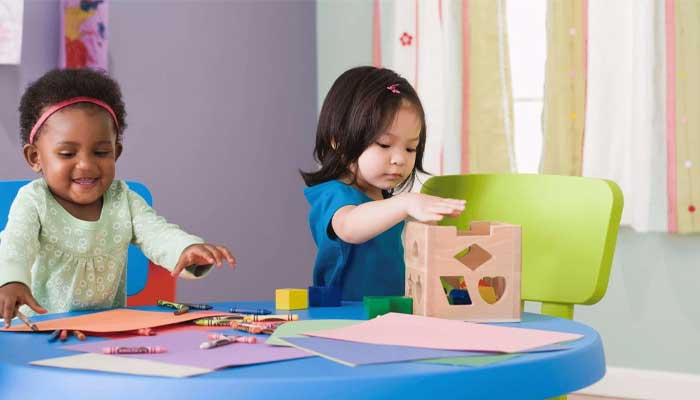- +91 7680015156
- advaithacdc@gmail.com
Why Crossing the Midline Activities Helped this Childrens Listen to his Teacher
- Home
- Blogs
- Why Crossing the Midline Activities Helped this Childrens Listen to his Teacher
In the intricate tapestry of child development, certain activities play a pivotal role in shaping crucial cognitive and motor skills. One such cornerstone is the concept of "Midline Activities." In this exploration, we will delve into the essence of midline activities and unravel the transformative impact they can have on a child's ability to engage and learn. Specifically, we'll examine the compelling narrative of how crossing the midline activities proved to be a game-changer, fostering improved attentiveness and receptivity in a young learner.

What are Midline Activities?
The midline, a virtual line dividing the body into left and right halves, serves as a crucial reference point for motor and cognitive functions. Midline activities involve tasks that require a child to cross this imaginary boundary, promoting coordination between the two hemispheres of the brain. These activities encompass a spectrum of movements, from simple reaching across the body to more complex actions like crossing arms or legs.
Why are Midline Activities Important?
Brain Hemisphere Integration
Midline activities facilitate the integration of the brain's hemispheres, promoting seamless communication and cooperation between the left and right sides. This integration is vital for various cognitive functions, including attention, memory, and problem-solving.
Enhanced Coordination
Engaging in midline activities hones a child's fine and gross motor skills. As they reach, cross, and move their limbs across the midline, they develop a heightened sense of body awareness and coordination, laying a solid foundation for physical competence.
Cognitive Advancements
The cross-lateral movements involved in midline activities stimulate neural pathways that are crucial for cognitive development. This not only enhances overall brain function but also contributes to improved academic performance.
How Crossing the Midline Activities Transformed a Child's Classroom Experience
Consider the case of a young learner who struggled to focus and listen to the teacher's instructions in a bustling classroom environment. Introducing a regimen of purposeful midline activities proved to be a turning point in this child's educational journey.
Increased Attention Span
By incorporating activities that required crossing the midline, the child's attention span saw a remarkable improvement. The enhanced coordination and brain integration fostered by these activities translated into a more focused and attentive learner.
Better Classroom Participation
The newfound ability to cross the midline translated into improved classroom participation. The child could now actively engage in activities that demanded crossing arms or reaching across the body, contributing to a more inclusive and participatory classroom experience.
Boosted Confidence
Success in mastering midline activities not only improved the child's physical and cognitive abilities but also boosted confidence. This newfound self-assurance positively influenced the child's overall attitude towards learning.
In the dynamic landscape of child development, midline activities emerge as catalysts for growth, fostering cognitive, motor, and behavioral advancements. The compelling journey of the child mentioned above serves as a testament to the transformative power of crossing the midline activities. As educators, parents, and caregivers, understanding and incorporating these activities into a child's routine can pave the way for a more enriched and fulfilling developmental journey.
Articles
- 7 Strategies to Accomplish Positive Compliance with Retained Primitive Reflex Integration
- Child with Zinc Deficiency may show signs of Learning Challenges
- Hands-Grasping Reflex Delays Handwriting and Speech Development if Retained
- Deep Breathing Activities to Calm Sensory Meltdowns and Ground Emotions
- 3 Retained Primitive Reflexes Responsible for Poor Balance
- toe walking
- Anxious Behavior
- Retained Primitive Reflexes that Cause Sensory Sensitivities
- Retained Primitive Reflexes Causing Picky Eating, Sugar Cravings and Compulsive Eating
- Tactile Defensiveness
- 10 Fun Activities to Boost Your Child's Speech Development
- Exploring Learning through Play: Educational Activities for Kids
- Why Crossing the Midline Activities Helped this Childrens Listen to his Teacher
- Music Therapy: Study Says Music Key for Non-Verbal Children and Children with Speech and Language Delays
- Tactile Toys for Sensory Defensiveness and Tactile Stimulation

